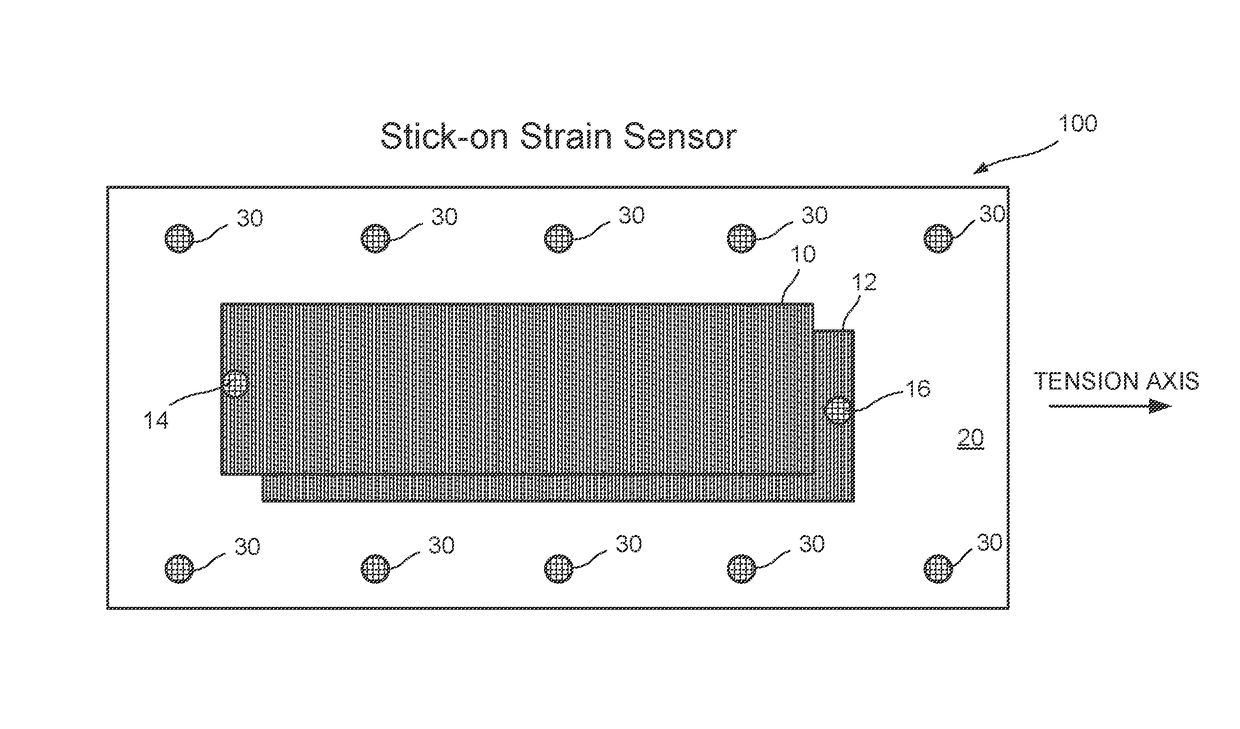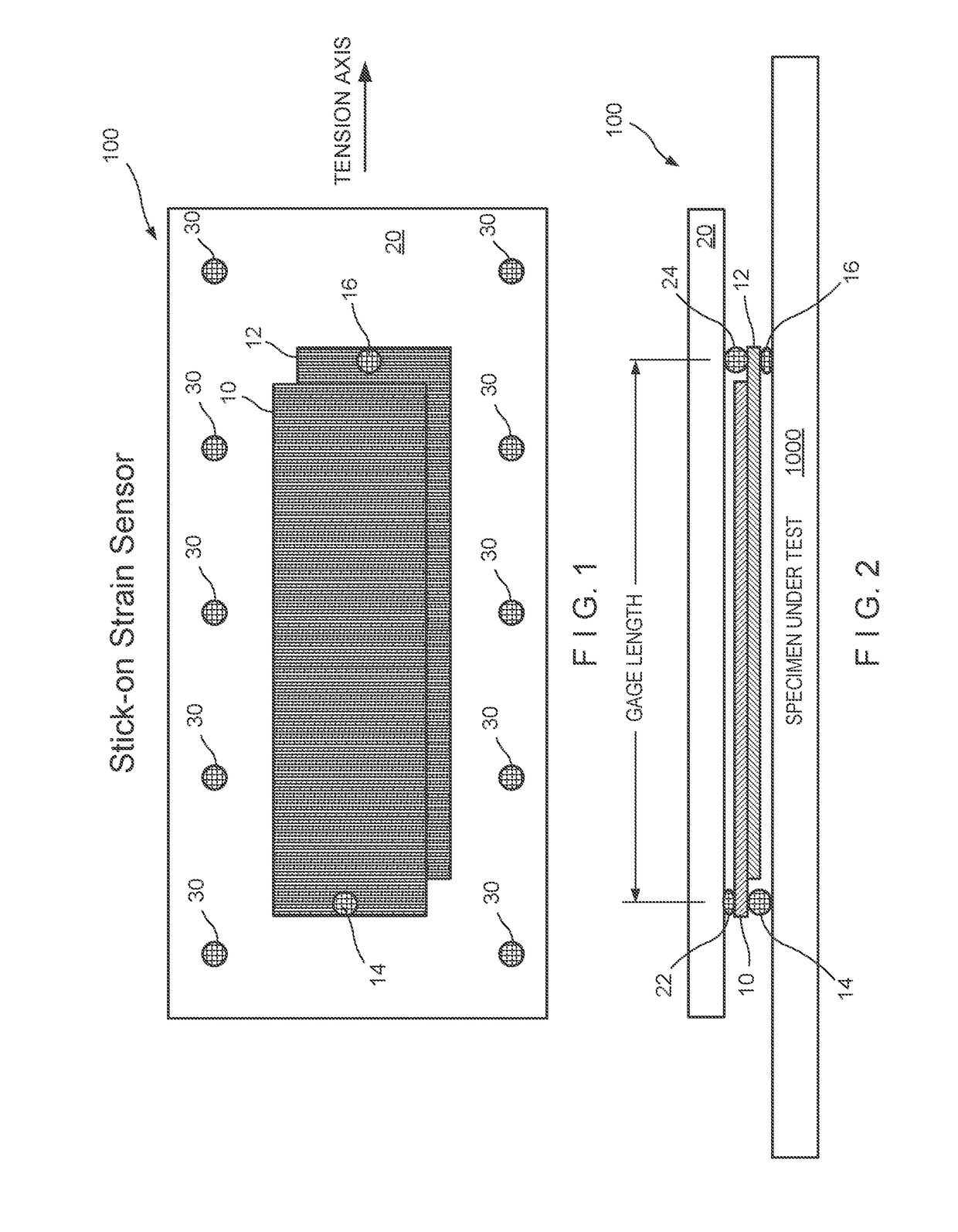Optical strain gauge
a strain gauge and optical technology, applied in the field of optical strain gauges, can solve the problems of high cost of extensometer types, and high rigidity of composite materials
- Summary
- Abstract
- Description
- Claims
- Application Information
AI Technical Summary
Benefits of technology
Problems solved by technology
Method used
Image
Examples
Embodiment Construction
[0030]Referring now to the drawings in detail, wherein like numerals refer to like elements throughout the several views, one sees that FIGS. 1 and 2 illustrate how an embodiment of the multi-layer optical strain gauge assembly 100 works. There is a first grating foil 10 overlapping a second grating foil 12. First and second grating foils 10, 12 may be a polyester substrate having high contrast grating patterns which generate a moire pattern or similar pattern of modulated intensity when overlapped. The first grating foil 10 is attached to the specimen under test 1000 by a first adhesive patch 14. Likewise, the second grating foil 12 is attached to the specimen under test by a second adhesive patch 16. The first and second grating foils 10, 12 are also held in place against transparent compliant layer 20 by third and fourth adhesive patches 22, 24, respectively. The sensor 100 is further held against the specimen 1000 by auxiliary adhesive patches 30 about the periphery of transpare...
PUM
 Login to View More
Login to View More Abstract
Description
Claims
Application Information
 Login to View More
Login to View More - R&D
- Intellectual Property
- Life Sciences
- Materials
- Tech Scout
- Unparalleled Data Quality
- Higher Quality Content
- 60% Fewer Hallucinations
Browse by: Latest US Patents, China's latest patents, Technical Efficacy Thesaurus, Application Domain, Technology Topic, Popular Technical Reports.
© 2025 PatSnap. All rights reserved.Legal|Privacy policy|Modern Slavery Act Transparency Statement|Sitemap|About US| Contact US: help@patsnap.com



